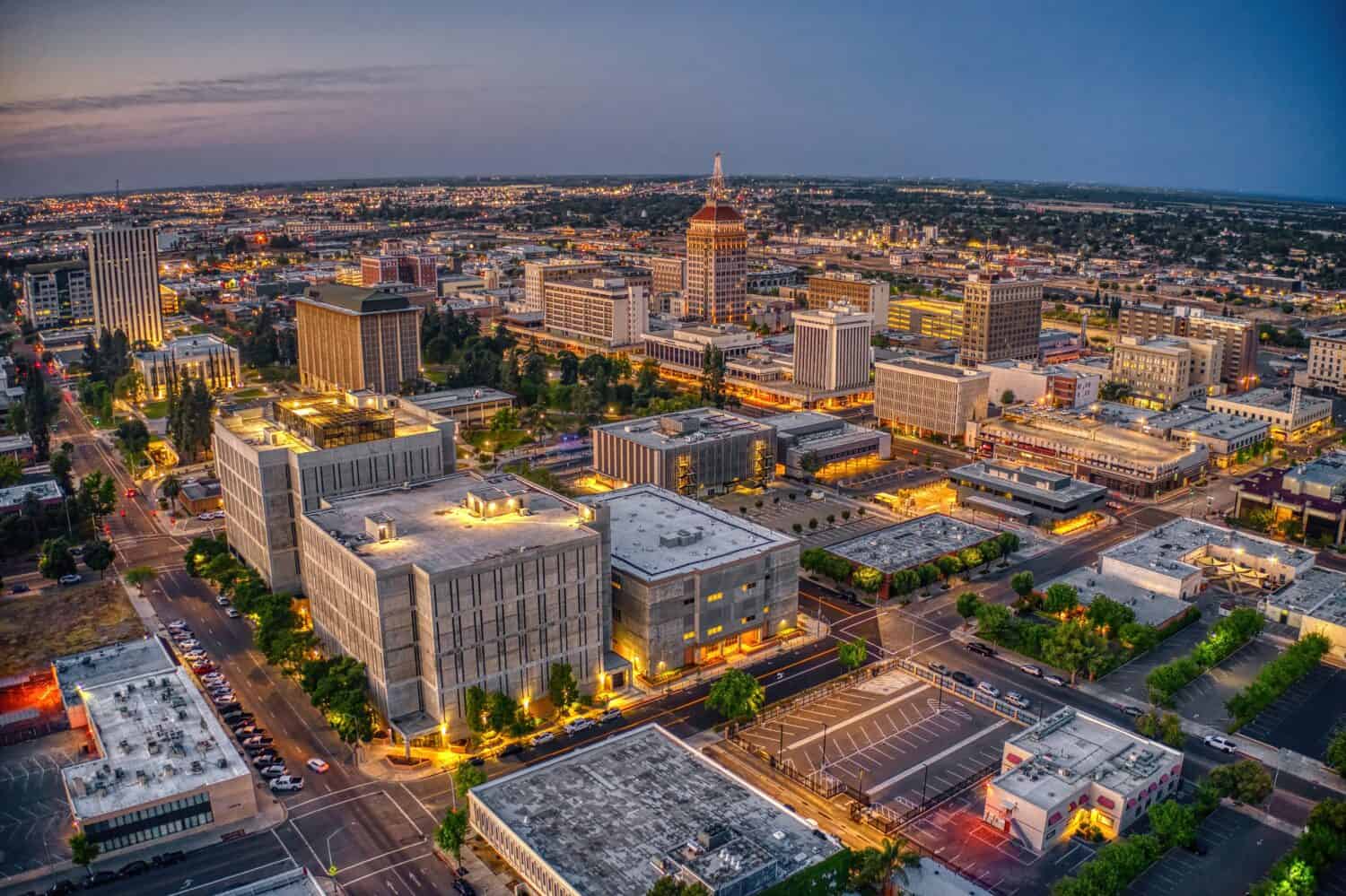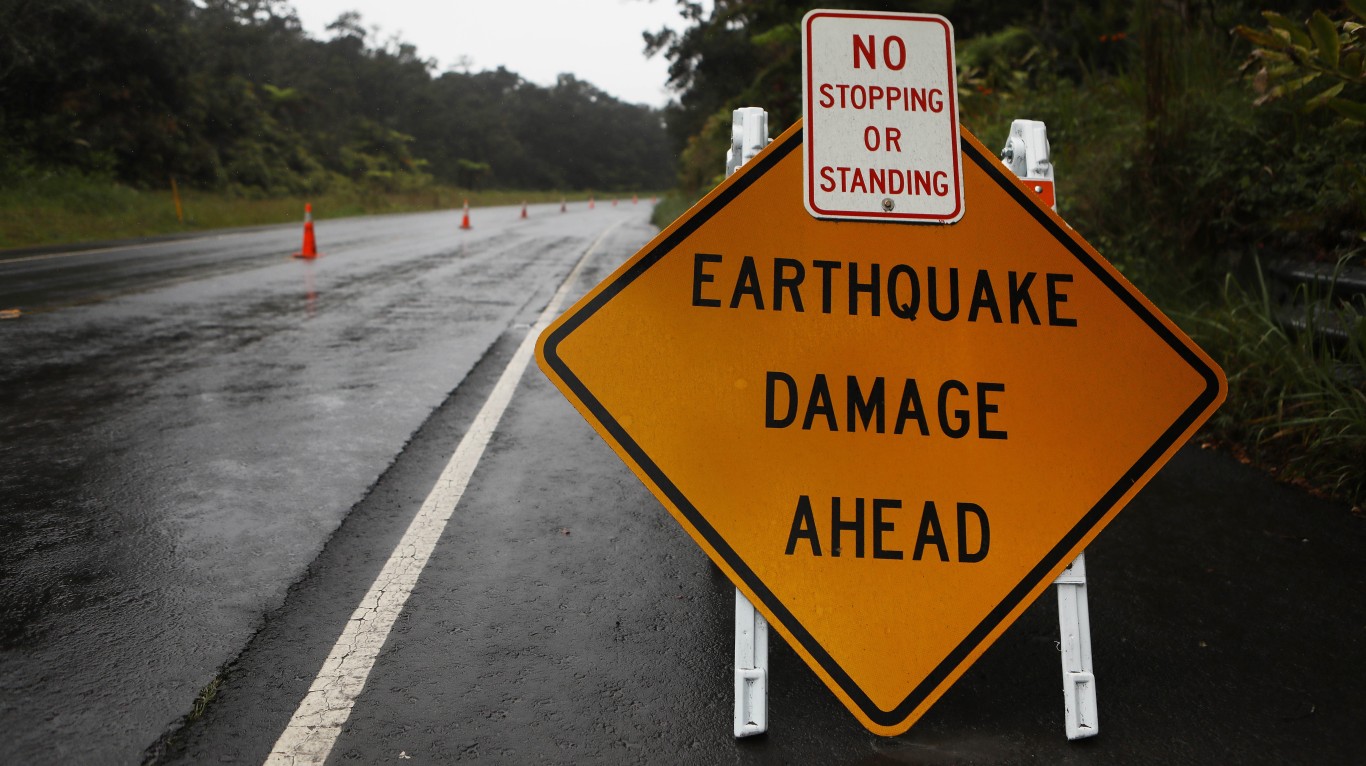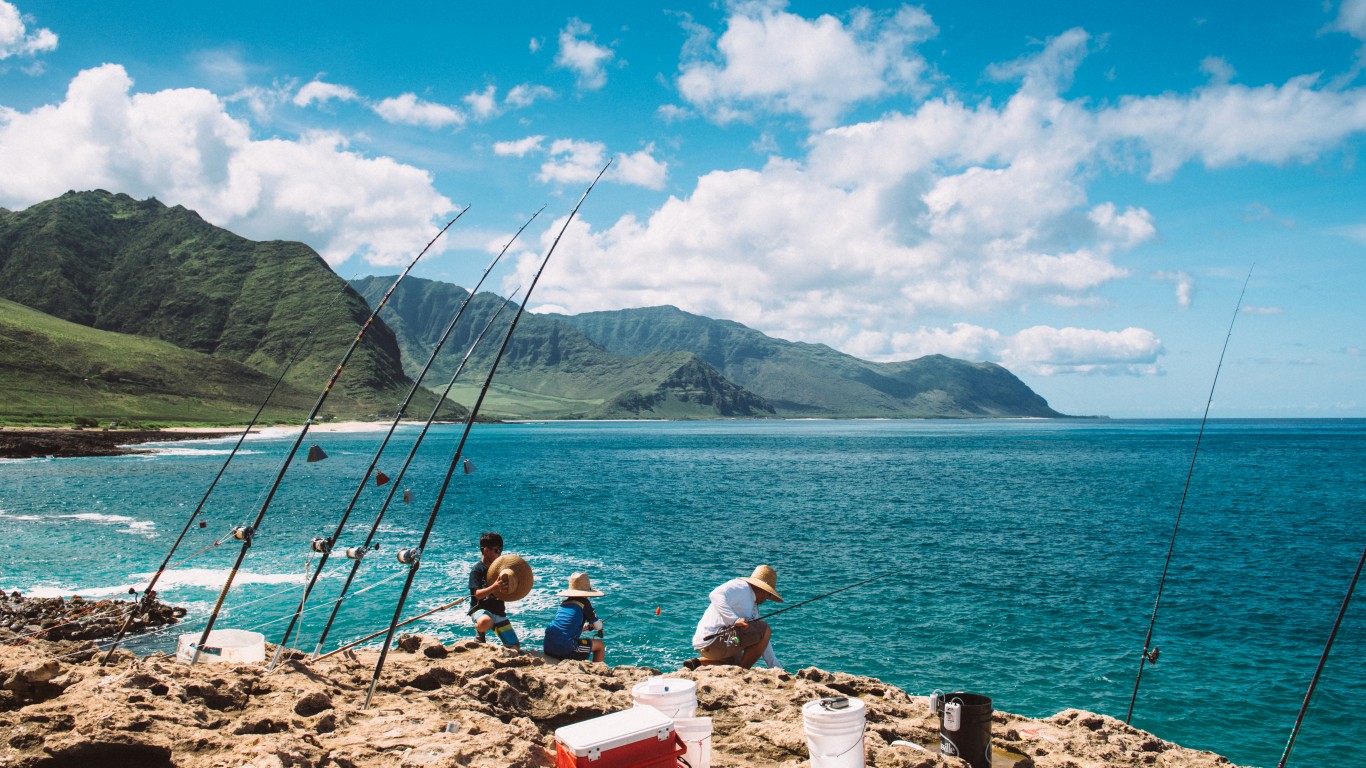
After about three weeks of heat wave engulfing much of the United States, this week is set to be wet and soggy in many parts of the country, while extreme heat will continue to stifle other parts.
The National Weather Service is forecasting rain and thunderstorms from Nevada south to New Mexico and Arizona, as well as the entire southern and eastern U.S. and parts of the Midwest. In some of these parts — including New Mexico, Texas, and East Coast states from South Carolina to Pennsylvania — there will be heavy rain that could result in flash floods. Meanwhile, the heat wave is forecast to continue in the West and Pacific Northwest, with increased fire risk in some areas. Already large fires are raging in Riverside County, California.
With extreme weather seeming to be increasingly affecting us, it is hard to consider averages and normals any longer. But of course, some areas do tend to be warmer and some hotter, while others tend to be cooler and some flat out cold. If we look at averages from observed data as far back as there are records and at climatological normals during the past 30 years, we can get a sense of the climate in certain cities — before any extreme weather phenomena and global warming effects.
To determine the city with the best weather, 24/7 Wall St. used Comparative Climatic Data from the National Oceanic and Atmospheric Administration to create an index based on 11 measures such as average temperatures, precipitation, cloud cover, wind, humidity, and more. Since many people prefer warm temperatures and relatively clear skies with some, but not too much, rain (enough for a more verdant environment but not too much that it impedes activities), we aimed to rank cities based on these features — and used the most preferred conditions as ideals.
For example, 72 degrees Fahrenheit was our ideal temperature and we penalized cities that deviated too far from this temperature one way or another. Similarly, 40 inches of rain and 40% humidity were determined as ideals, and cities were penalized if they deviated too much from those points. When averaging all the weather conditions considered, these are the cities with the best weather. For more on the methodology see: The US Cities With the Absolute Best Weather, According to Data.
Why this matters

10. Bakersfield, California (82.5/100)
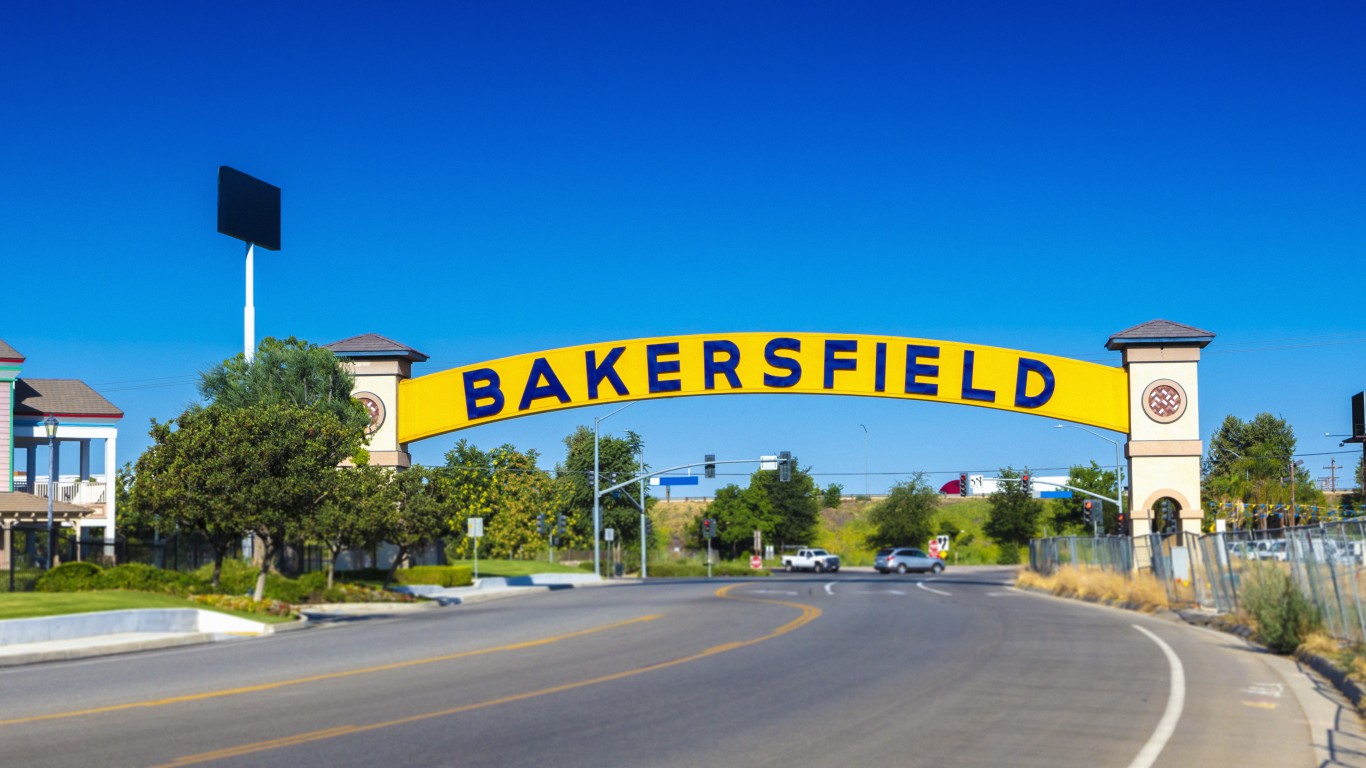
- Avg. annual temperature: 66.2 F
- Avg. rainy days per year: 37 days for an avg of 6.4 inches annually
- Avg. days of over 90F per year: 110 days
- Avg. days below freezing per year: 12 days
If you like hot, long summers and very mild winters, then Bakersfield could be the perfect fit. Situated inland north of Los Angeles, Bakersfield sits on the Kern River. Residents enjoy 191 days of sun and 81 days of partly cloudy skies, leaving only 93 cloudy days a year. Being in San Joaquin Valley, it can get very hot in the city. For 110 days, temperatures in the city can reach 90 degrees, with an average temperature in the summer months of 82.3 degrees, but the afternoon humidity is a near perfect average of 38%, alleviating the high temps. The winters are pleasantly mild, with an average temperature of 50.8 F, and there are only 37 rainy days a year. However, the city’s arid climate means that just 6.4 inches of rain fall annually.
9. Sacramento, California (82.6/100)
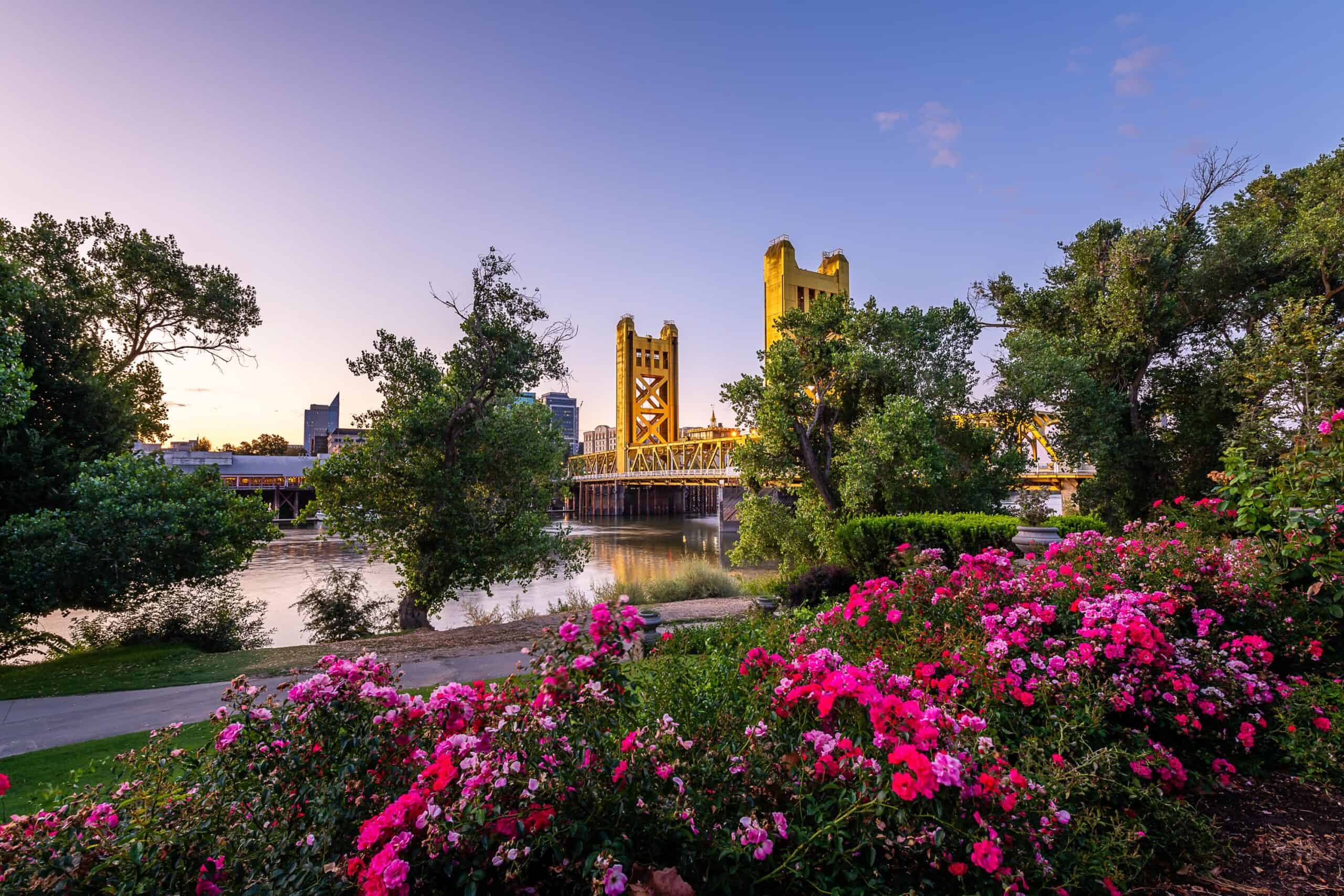
- Avg. annual temperature: 61.8 F
- Avg. rainy days per year: 57 days for an avg of 18.1 inches annually
- Avg. days of over 90F per year: 75 days
- Avg. days below freezing per year: 17 days
If Bakersfield is too much in terms of heat, but you’d still rather enjoy hot weather, then the capital of the state could be it for you. Sacramento, which lies at the confluence of the Sacramento River and American River northeast of San Francisco, has a hot-summer Mediterranean climate, meaning the summers are long, hot, and dry, while the winters are cool and relatively rainy. Indeed the average winter temperature is 48.8 F and the average summer temperature is 74.5 F. The city has fewer days of extremely hot temperatures than Bakersfield, but also more cloudy days. Residents enjoy 188 days of sun, 77 days of partly cloudy skies, and 100 cloudy days. The afternoon humidity helps keep high temperatures more comfortable.
8. Santa Maria, California (82.7/100)
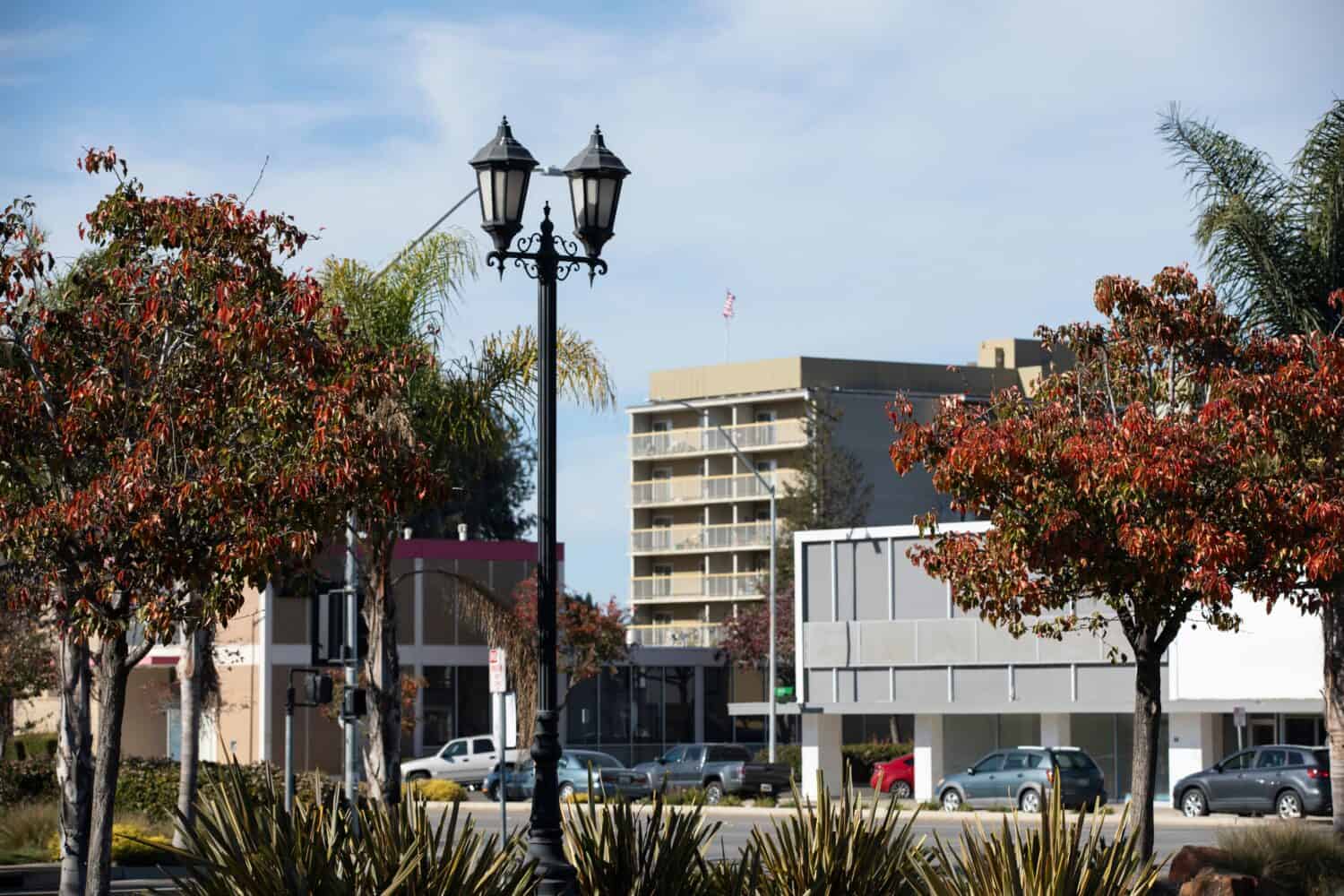
- Avg. annual temperature: 58.6 F
- Avg. rainy days per year: 46 days for an avg of 13.3 inches annually
- Avg. days of over 90F per year: 5 days
- Avg. days below freezing per year: 15 days
Known for its wine industry, Santa Maria is located on California’s central coast, about 150 miles northwest of Los Angeles. It has a a cool Mediterranean climate, meaning it is mostly sunny and can get hot, but the ocean breeze helps cool things down. The result is far fewer days of temperatures reaching 90 degrees, at just five, and an average maximum temperature in the summer months at a comfortable 72.8 F. City residents enjoy about 176 days of sun and 110 days of partly cloudy skies, leaving only 80 days of fully clouded days. It rarely reaches freezing temperatures in the city, with average minimum temperature in the winter months at 41.2 F, and it still only rains for 46 days a year.
7. Fresno, California (82.7/100)
- Avg. annual temperature: 65 F
- Avg. rainy days per year: 45 days for an avg of 11.0 inches annually
- Avg. days of over 90F per year: 109 days
- Avg. days below freezing per year: 18 days
Another city in San Joaquin Valley, Fresno can also get very hot. In between San Francisco (about 185 miles southeast) and Los Angeles (roughly 220 miles north) the city is relatively close to Yosemite National Park. With its hot Mediterranean climate, the city has cool, mild winters and long, hot, dry summers similar to Bakersfield (No. 10) but with nearly double the rainfall. Still, it doesn’t rain much, with only 45 days of of 0.01 inches of rain or more. City residents enjoy 194 days of clear skies and 73 days of part clouds, leaving just 98 days of clouds. While summers can get very hot, with an average temperature of 81.3 F, winters are mild, with an average temperature of 49.3 F. The comfortable afternoon humidity helps with the high temps in the summer.
6. Kahului, Hawaii (83.0/100)
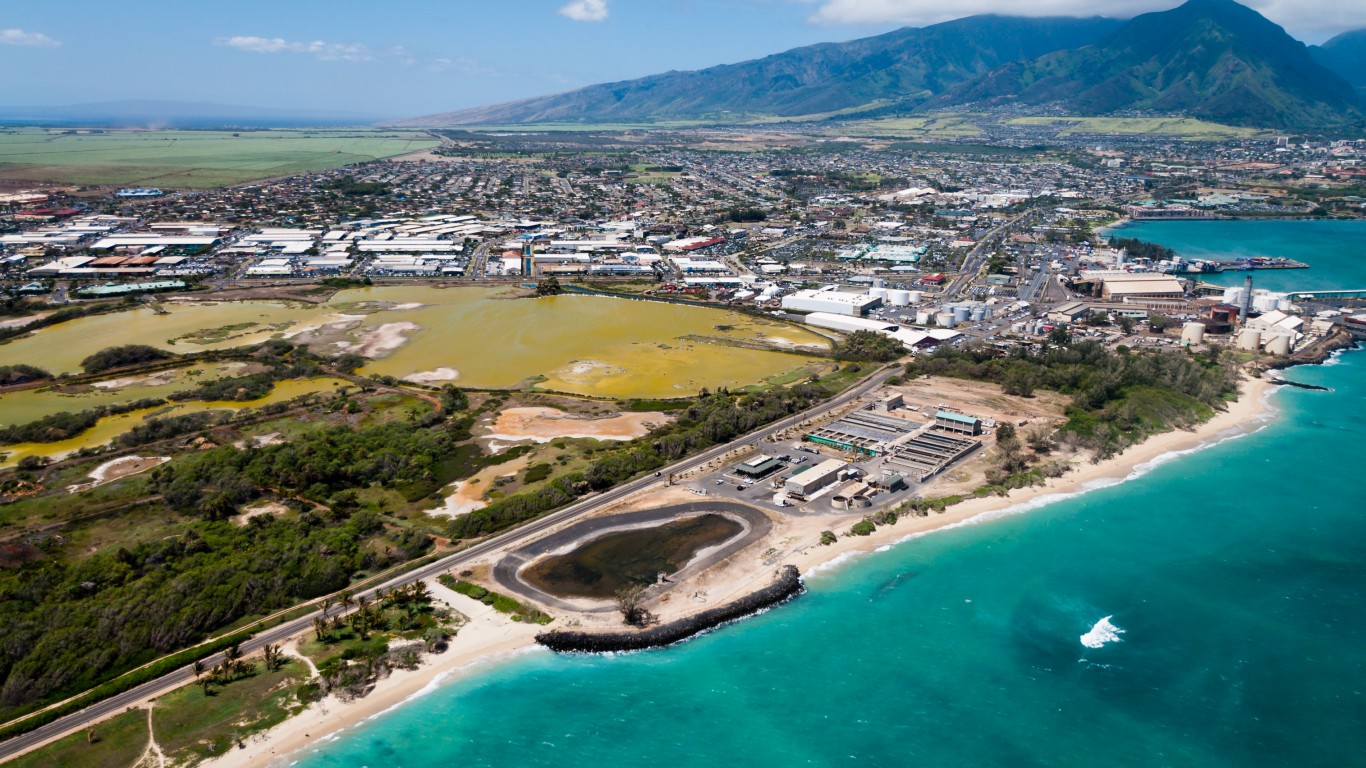
- Avg. annual temperature: 77.1 F
- Avg. rainy days per year: 88 days for an avg of 16.2 inches annually
- Avg. days of over 90F per year: 29 days
- Avg. days below freezing per year: 0 days
Kahului is on Maui Island of Hawaii, part of the Kahului-Wailuku-Lahaina metropolitan area. Because it is located on the leeward side of Maui, it has a hot semi-arid climate with a dry summer. Compared to the cities in California listed so far, it has no days of below freezing temperatures (on average) and fewer days of temperatures reaching 90 F. It has much more even temperatures year-round, with the lows in the winter averaging 64.4 F and the highs in the summer averaging 89.1 F. While it gets more rainy days than the cities on the list so far, most of the time it is sunny or partly cloudy, with just 90 cloudy days a year.
5. Honolulu, Hawaii (84.6/100)
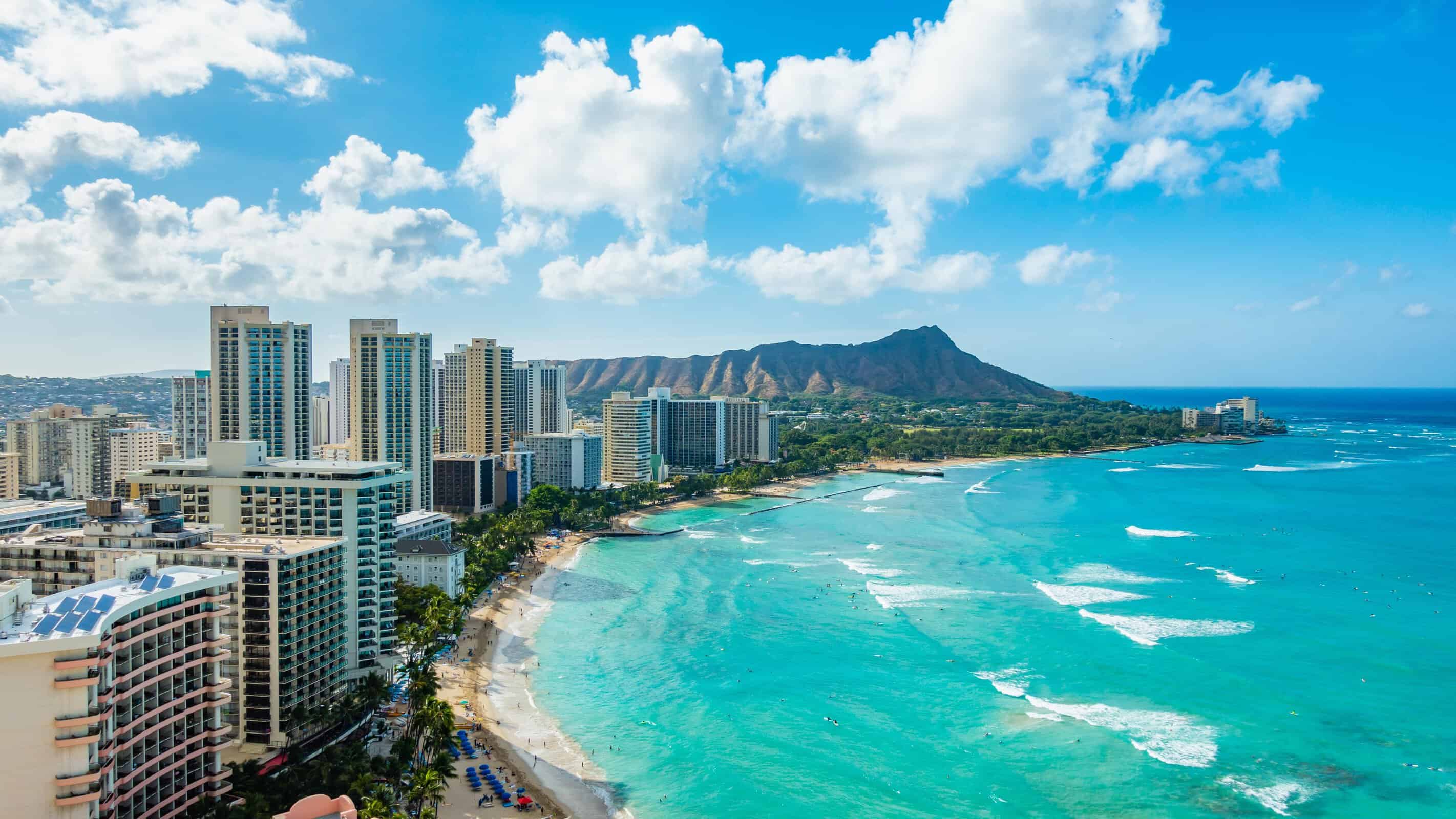
- Avg. annual temperature: 78 F
- Avg. rainy days per year: 92 days for an avg of 16.4 inches annually
- Avg. days of over 90F per year: 25 days
- Avg. days below freezing per year: 0 days
The capital of Hawaii sits on the island of Oahu’s leeward side. As a result, it has a mostly arid summer season and semi-arid climate. On average, there are no days when the temperature falls below freezing, and the winter’s low temperature is just 67.7 degrees for a comfortable mean of 74.3 F in the winter months. The mean summer temperature of 81.4 F lends itself to water sports and beach activities. With only 94 cloudy days, the city’s near tropical climate is a tourist destination for both global and domestic tourists.
4. Charleston, South Carolina (85.5/100)
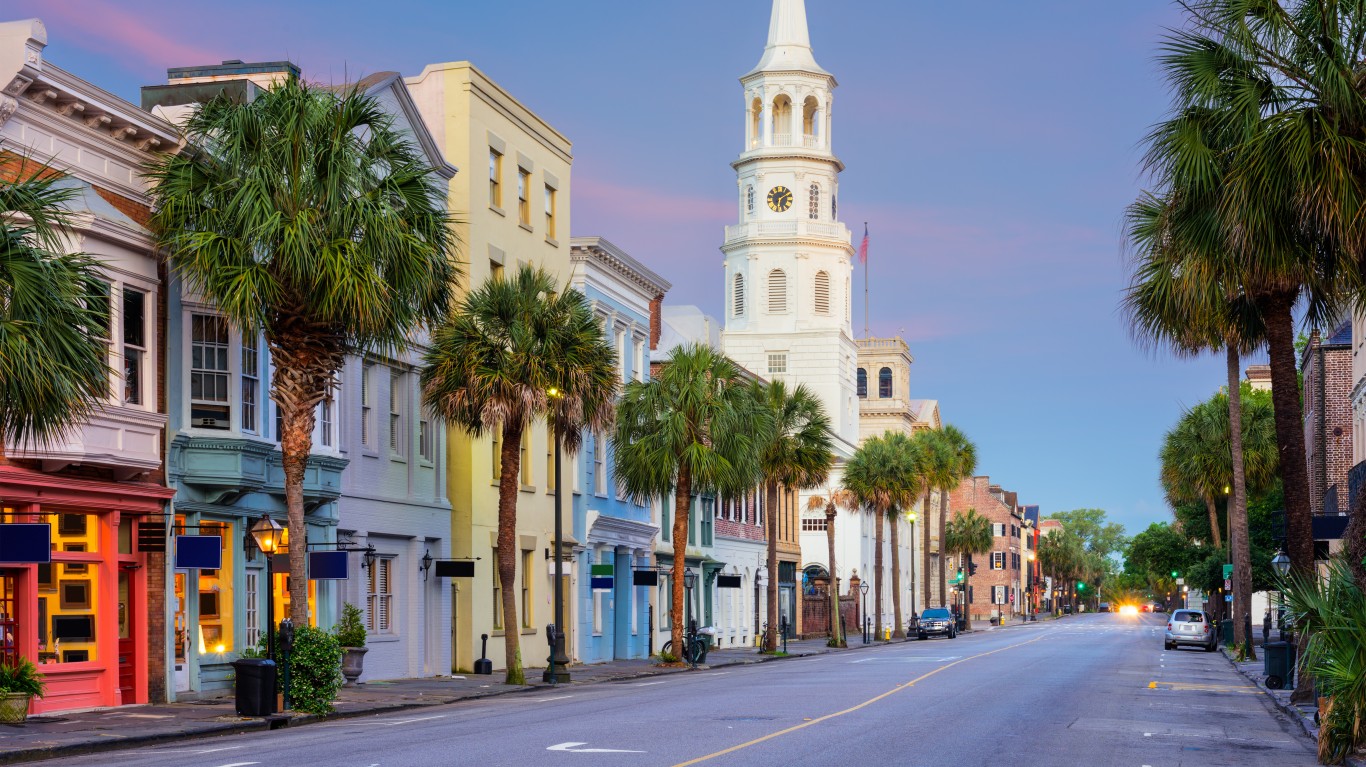
- Avg. annual temperature: 67.2 F
- Avg. rainy days per year: 107 days for an avg of 44.3 inches annually
- Avg. days of over 90F per year: 30 days
- Avg. days below freezing per year: 10 days
The only city on the East Coast in the top 10 American cities for weather, the county seat of Charleston County lies on Charleston Harbor, an inlet of the Atlantic Ocean formed by the confluence of three rivers. Though it gets more cloudy days than most of the top 10 cities (at 155 cloudy days) and more rainy days as well, the city nonetheless enjoys a humid subtropical climate, with mild winters — with a mean temperature of 52.6 F — and hot, humid summers with a meant temperature of 81 F. Summer is the wettest season, and altogether the city gets about 44 inches of rain annually, making it the wettest and lushest among the top 10. Charleston attracts tourists for its architecture, water activities, and history, and the downtown area is often more pleasant due to maritime effects.
3. San Diego, California (85.8/100)
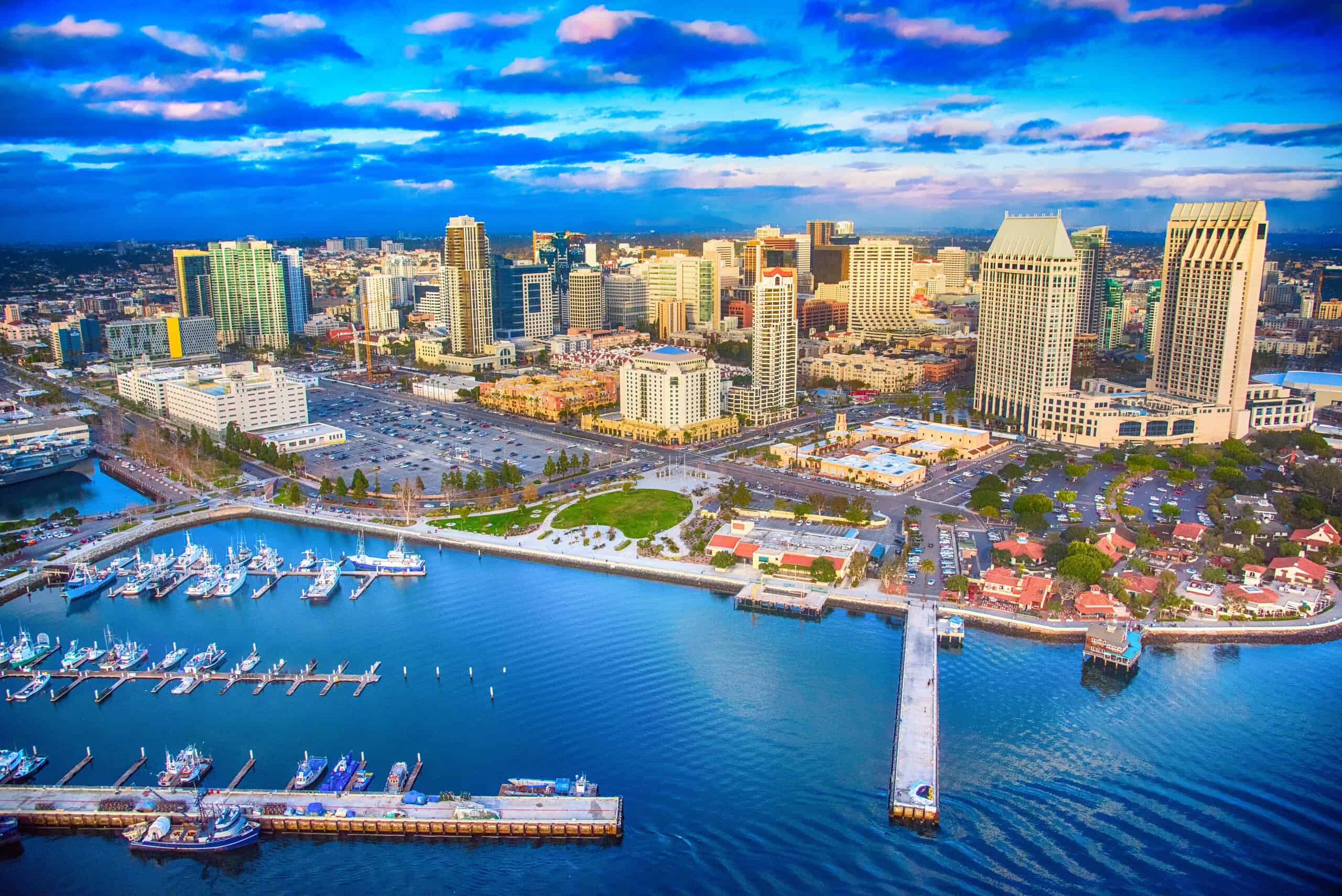
- Avg. annual temperature: 64.7 F
- Avg. rainy days per year: 41 days for an avg of 9.8 inches annually
- Avg. days of over 90F per year: 3 days
- Avg. days below freezing per year: 0 days
Back to the Pacific coast, in the southern part of California near the Mexico-U.S. border, San Diego is known for its beaches. Of course, without a warm climate, it would be hard to enjoy those beaches. With no days of temperatures reaching the freezing mark (on average), San Diego has warm, dry summers with mean temperatures of 70.1 F and mild winters with mean temperatures of 58.4 F. Temperatures on only three days a year, on average, reach 90 F and over. Residents enjoy mostly sunny and partly cloudy skies and just 41 days of rain. Because of the city’s topography, it can sometimes be cloudy, cool, and damp air near the coast, but be bright and sunny some 5-10 miles inland.
2. Los Angeles, California (87.2/100)
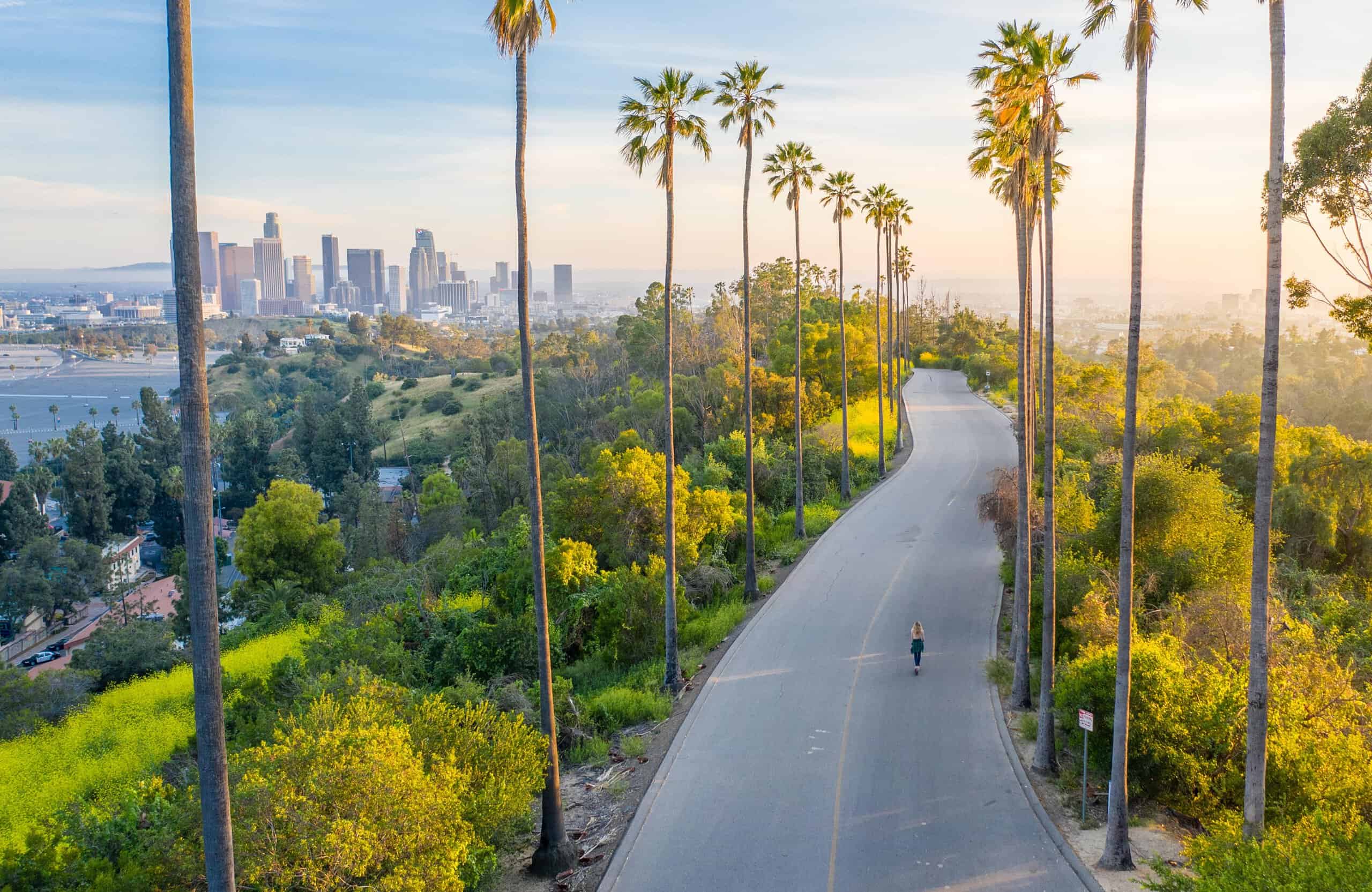
- Avg. annual temperature: 65.8 F
- Avg. rainy days per year: N/A days for an avg of 14.3 inches annually
- Avg. days of over 90F per year: 21 days
- Avg. days below freezing per year: 0 days
Those who aren’t familiar with the Los Angeles weather have not been watching movies or TV shows — so many of them are set in the sprawling Southern California metropolitan. It is almost always sunny there (only 103 cloudy days), never too cold (no days, on average, of freezing temperatures), and relatively few days of temperatures reaching 90 F and over. It has a semi-arid climate and temperatures are generally temperate year round. The mean temperature in the winter months is 58.4 F, and in the summer it is 72.4 F.
1. Long Beach, California (87.3/100)
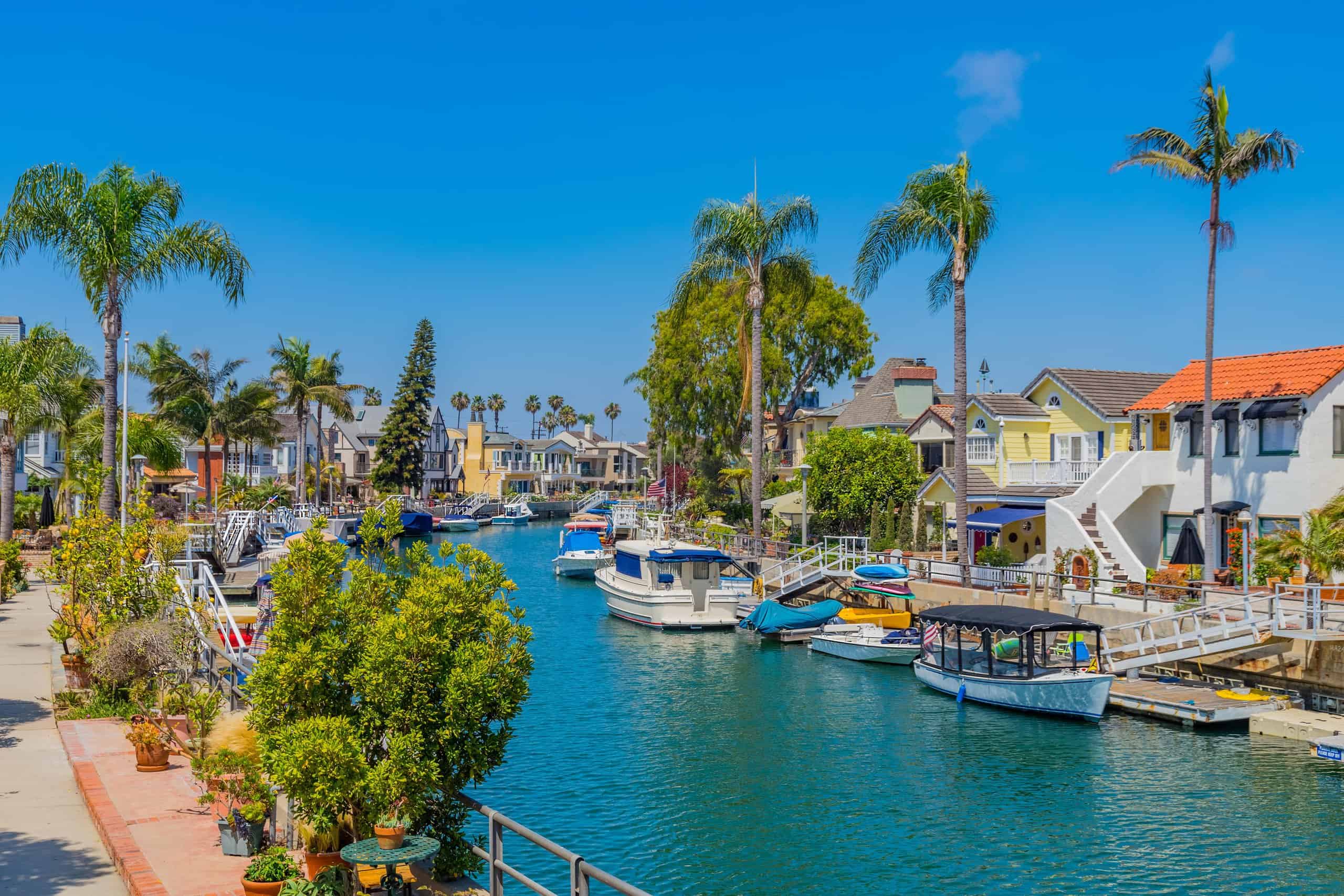
- Avg. annual temperature: 64.9 F
- Avg. rainy days per year: 34 days for an avg of 12.0 inches annually
- Avg. days of over 90F per year: 22 days
- Avg. days below freezing per year: 0 days
This Southern California city is ranked as having the best weather nationwide, when averaging a myriad of measures. The coastal city, which is just 21 miles south of downtown Los Angeles, can have different weather from LA, yet it also has a hot semi-arid climate or a hot-summer Mediterranean climate. The hot summers include about 22 days of temperatures reaching 90 F or more, and the mild to warm winters have no days of freezing temperatures (on average). Year-round there are only about 34 rainy days and 87 cloudy days. The mean temperature in the summer months is 72 F, and during the winter months it is 57.1 F. While it can get hot and humid, westerly, afternoon sea breeze helps to keep temperatures mild.
It’s Your Money, Your Future—Own It (sponsor)
Are you ahead, or behind on retirement? For families with more than $500,000 saved for retirement, finding a financial advisor who puts your interest first can be the difference, and today it’s easier than ever. SmartAsset’s free tool matches you with up to three fiduciary financial advisors who serve your area in minutes. Each advisor has been carefully vetted and must act in your best interests. Start your search now.
If you’ve saved and built a substantial nest egg for you and your family, don’t delay; get started right here and help your retirement dreams become a retirement reality.
Thank you for reading! Have some feedback for us?
Contact the 24/7 Wall St. editorial team.
